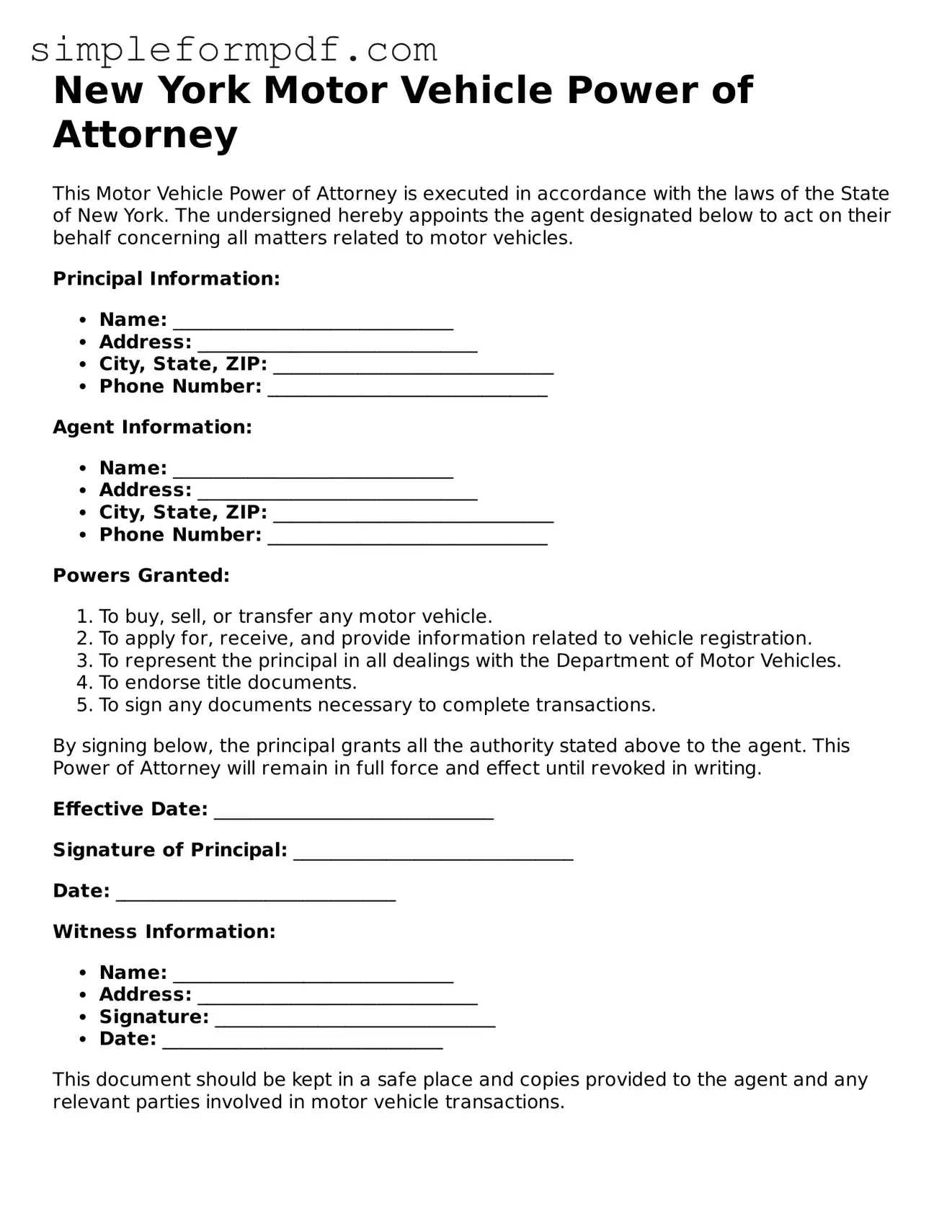New York Motor Vehicle Power of Attorney
This Motor Vehicle Power of Attorney is executed in accordance with the laws of the State of New York. The undersigned hereby appoints the agent designated below to act on their behalf concerning all matters related to motor vehicles.
Principal Information:
- Name: ______________________________
- Address: ______________________________
- City, State, ZIP: ______________________________
- Phone Number: ______________________________
Agent Information:
- Name: ______________________________
- Address: ______________________________
- City, State, ZIP: ______________________________
- Phone Number: ______________________________
Powers Granted:
- To buy, sell, or transfer any motor vehicle.
- To apply for, receive, and provide information related to vehicle registration.
- To represent the principal in all dealings with the Department of Motor Vehicles.
- To endorse title documents.
- To sign any documents necessary to complete transactions.
By signing below, the principal grants all the authority stated above to the agent. This Power of Attorney will remain in full force and effect until revoked in writing.
Effective Date: ______________________________
Signature of Principal: ______________________________
Date: ______________________________
Witness Information:
- Name: ______________________________
- Address: ______________________________
- Signature: ______________________________
- Date: ______________________________
This document should be kept in a safe place and copies provided to the agent and any relevant parties involved in motor vehicle transactions.
